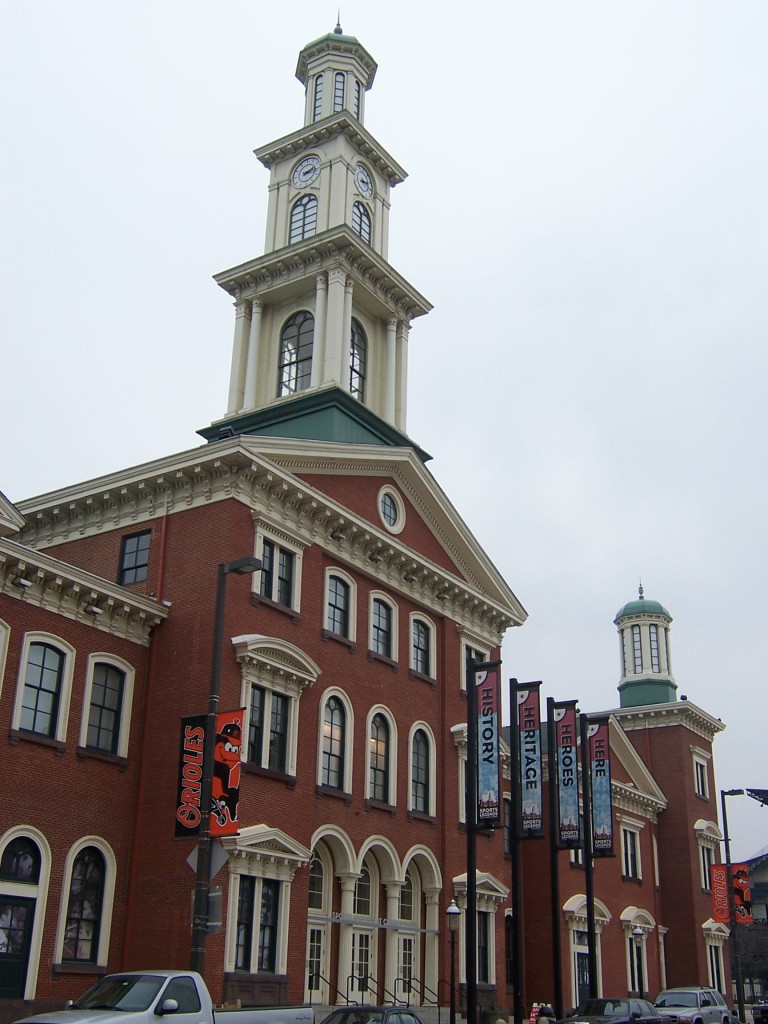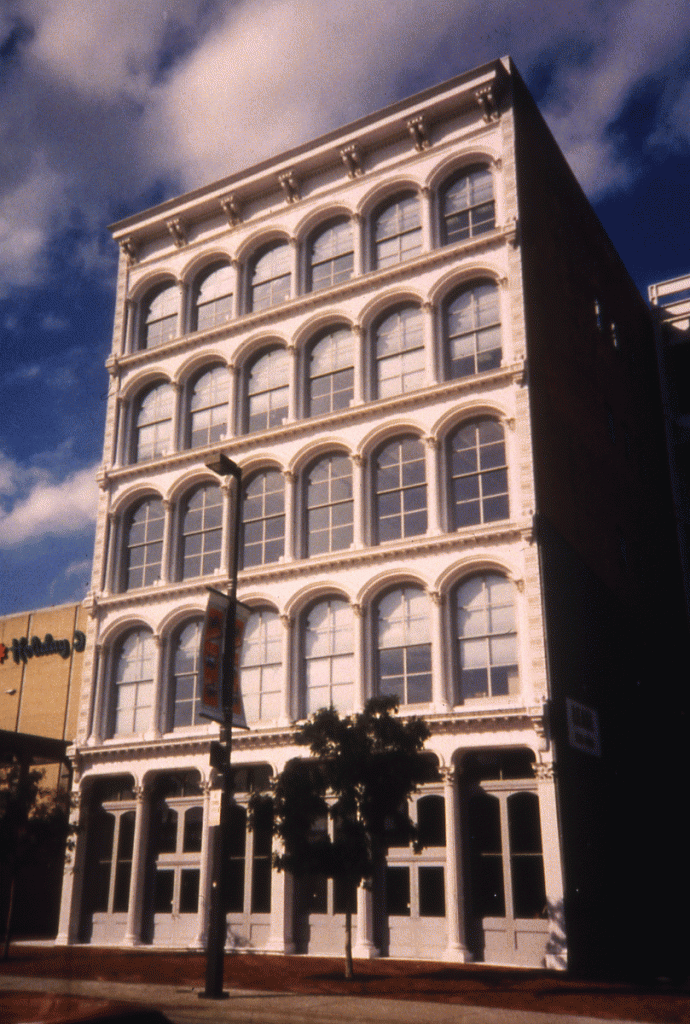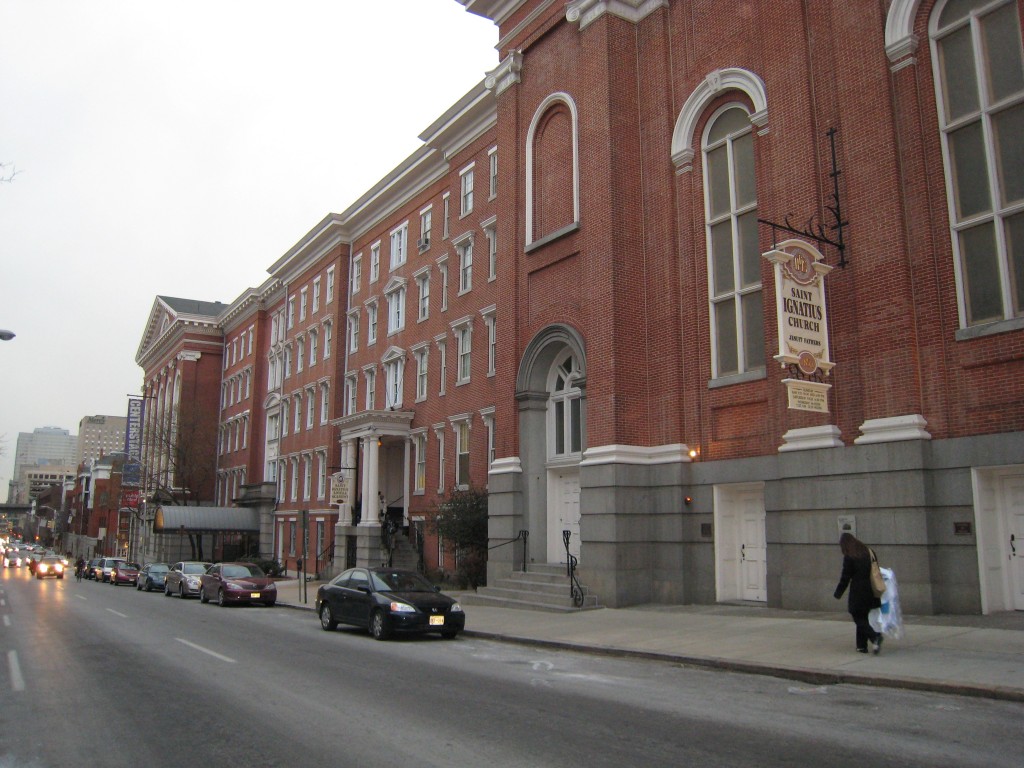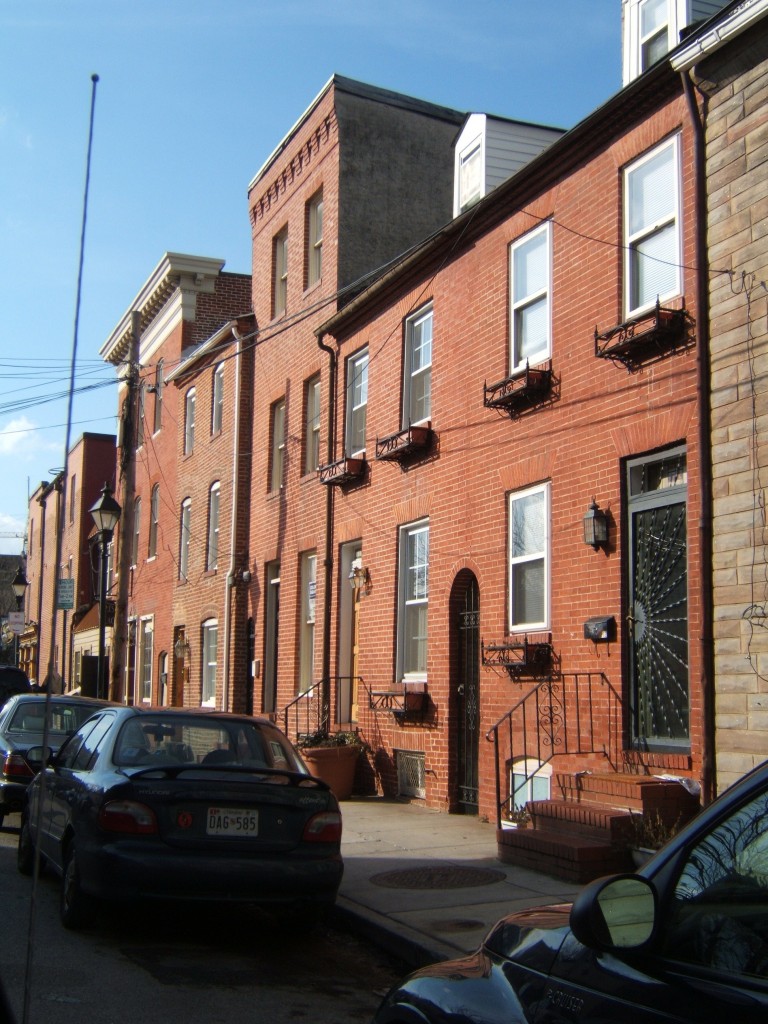
At the beginning of the railroad era, no one knew what a grand metropolitan rail terminus should look like. In the mid-1850s the Baltimore and Ohio Railroad chose the Italianate style, with bracketed cornices and window arches; a long, symmetrical composition of pavilions and lower hyphens; and a curious skyline of tower and cupolas seemingly drawn from church architecture. At 185 feet, the central tower was the tallest structure in Baltimore when the building was completed in 1867, a beacon for travelers making their way to their trains through the crowded commercial district. As with so many mid-19th century buildings, the architects were Niernsee and Neilson.
With the decline of train service Camden Station declined as well, eventually losing its crowning array of tower and cupolas. In the early 1990s, however, the old station was taken in hand by the architects Cho, Wilkes, and Benn as part of the Oriole Park sports complex. Using fiberglass and other modern materials they reconstructed the stations skyline and prepared the interior for reuse as museum space.





